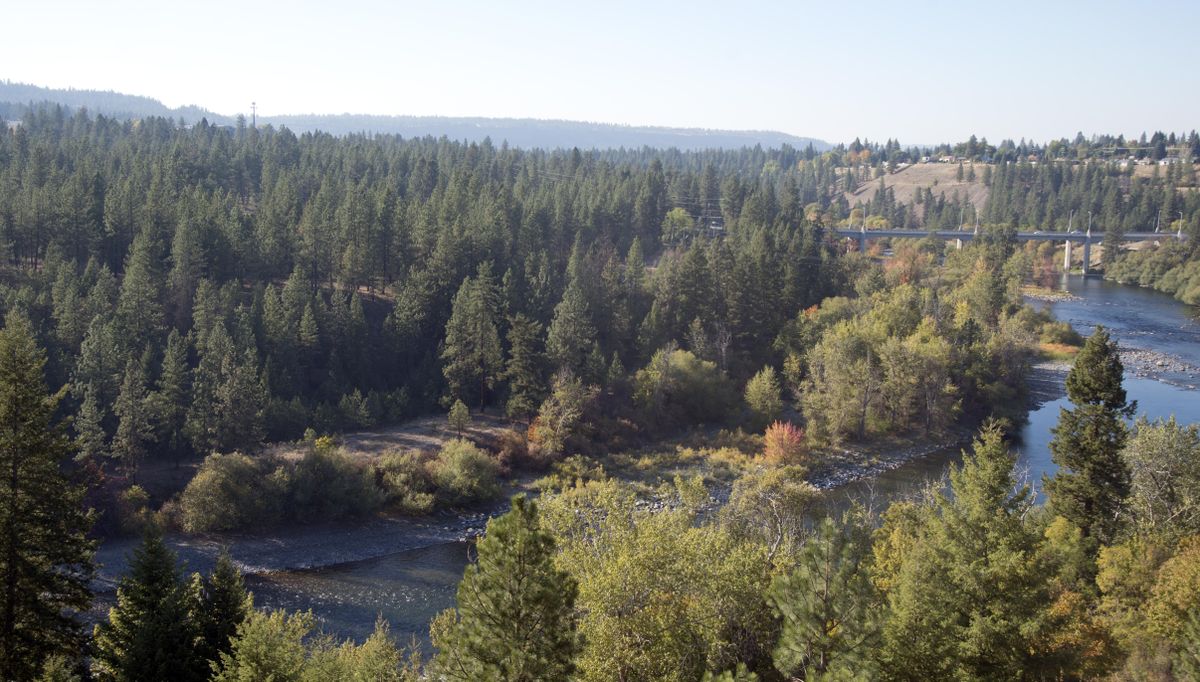Catholic Charities to purchase convent buildings, part of property along Spokane River

A quiet oxbow in the Spokane River will retain much of its wooded character, as well as its religious affiliation, as a century-old convent said Tuesday it was selling 67 acres of land it has owned since 1965.
Catholic Charities Spokane will purchase more than half of the campus belonging to the Sisters of the Holy Names of Jesus and Mary, with plans to build up to 382 additional units of affordable housing on 36 acres, according to public documents.
The Sisters also plan to conserve the remaining 31 acres, which includes the entire river frontage. The Sisters have applied for the Spokane County Conservation Futures program to purchase that land off Fort George Wright Way near Spokane Falls Community College.
“We selected Catholic Charities because their service to Spokane residents and their commitment to stewardship of the property are consistent with our history and mission in this community and with our values and goals for the future of the property,” Sister Kathleen Hilton said in a statement.
Rob McCann, executive director of Catholic Charities, said the “flagship” of their proposal is its partnership with Empire Health Foundation to reduce by half the number of kids in foster care in Eastern Washington.
“There are so many families where the kids don’t need to be removed,” McCann said, noting instances of mild neglect or addiction. “We believe we can make a difference. That’s the center point. That’s the pillar for the whole property.”
There are now 1,000 Eastern Washington children placed in foster care. The goal would be to reduce the number to 500 within five years.
McCann said the property would be used as transitional housing for such families, where parents would learn basic “life skills” and families would gain stability. Instead of dealing with the “trauma” of foster care, McCann said, children would instead enjoy the splendor of nature.
“There’s woods. They can go swim in the river. There’s moose that live there,” McCann said.
By using the existing structures, as well as the construction of new buildings, there could be up to 1,000 residential units under existing zoning rules.
The land has long been zoned for high-density residential development. If any structures are built on the land, they must have at least 15 living units per acre, and can be up to 55 feet high.
McCann said his nonprofit will use the existing convent for transitional living for troubled families. In 1969, a year after the new convent was built, the American Institute of Architects honored the structure with a national award. The jury said the design maintained “a happy balance between community and privacy.”
Though the land purchase is not yet official, McCann expected the deal to close within six months. He did not share the price, a request made by the Sisters.
Kitty Klitzke, Eastern Washington program director with the environmental land-use group Futurewise, cautioned against putting so much housing on the “geographically constrained and isolated” land.
“There are only three ways out of that neighborhood, and there’s a lot of traffic there already,” Klitzke said, noting that traffic from the community college can be heavy at times. “If there was a gas leak and people had to get out of the neighborhood quickly, hopefully it wouldn’t happen on a Sunday when everybody’s at the big church there.”
Klitzke said the plan to conserve nearly half the property was “very good,” but worried that there wasn’t a big-enough buffer between the proposed structures and the 200-foot shoreline setback required by the city.
“We don’t have a lot of intact riparian area, which are so important for birds and wildlife,” she said.
Under the Sisters’ plan, the remaining acreage would be maintained as a wooded natural area. They are seeking $4 million from the Conservation Futures program, according to county officials. The funding is generated through property taxes.
Securing that type of funding is far from certain, but Paul Knowles, a county park planner who runs the program, said the Sisters’ land was “a very special piece of property.” Approval of a formal process by the county’s land evaluation committee is the first step for acquiring the property using the funding. That process would judge the land based on its wildlife habitat, riparian habitat, recreation value, connections to current trail open space networks, and public access.
Doug Chase, director of the county’s parks department, said the land would also need two separate appraisals to ensure the property was purchased at “fair market value.” If no properties are purchased by the end of 2016, the fund will have $2.3 million available for acquisition.
Since the property is within city limits, the city’s park board would have to approve of the purchase before any formal evaluation, and the county would hand the deed over to the city’s parks department since it is the “logical owner.”
Tony Madunich, the city’s parks operations director, said the land is not out of character with other parcels the city’s parks department owns. Nearly three-quarters of the 4,000 acres the city parks department owns is undeveloped, including Camp Sekani, High Drive Conservation Area (better known as the Bluffs), and Palisades Park.
Still, Madunich agreed that the property was special.
“It’s not often that we find property of that size that’s vacant and right on the river like it is,” he said. “It certainly has some incredible things worth considering.”